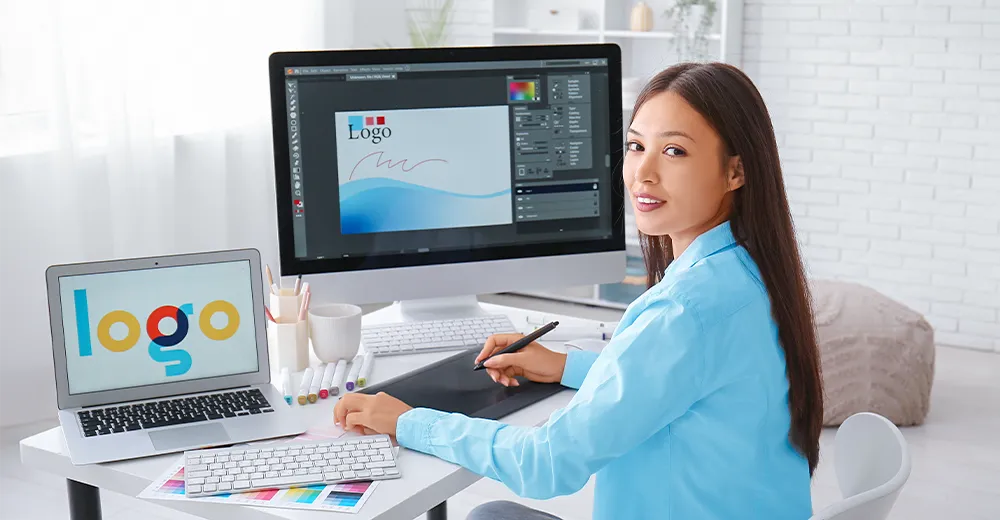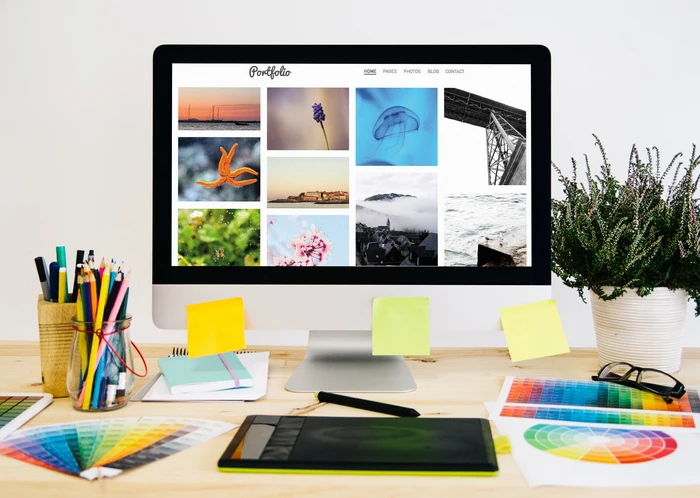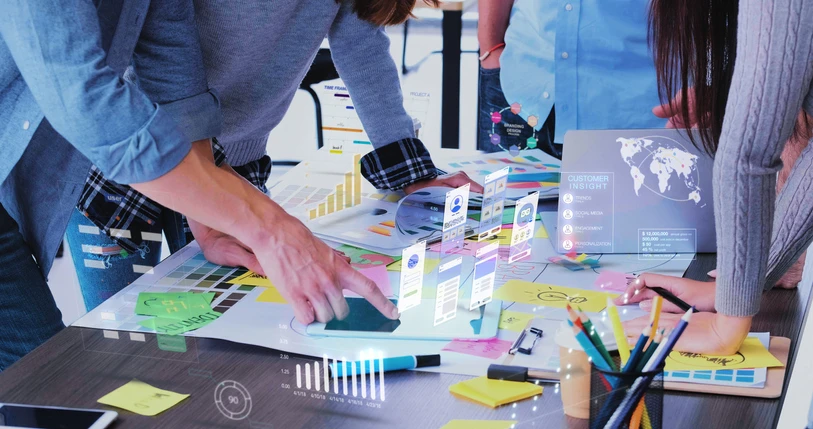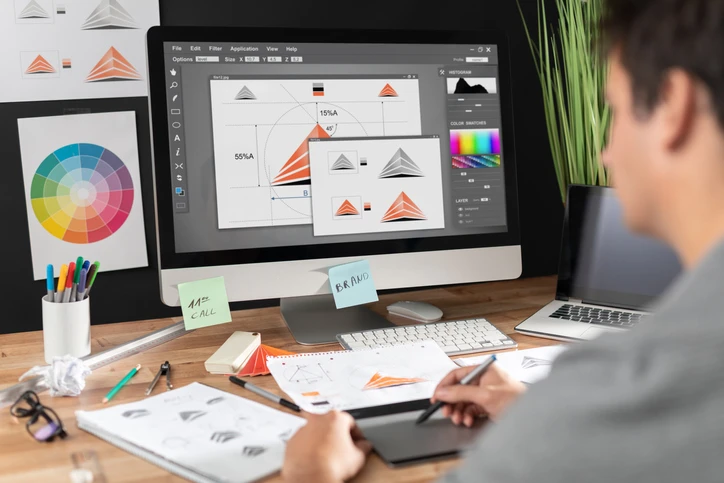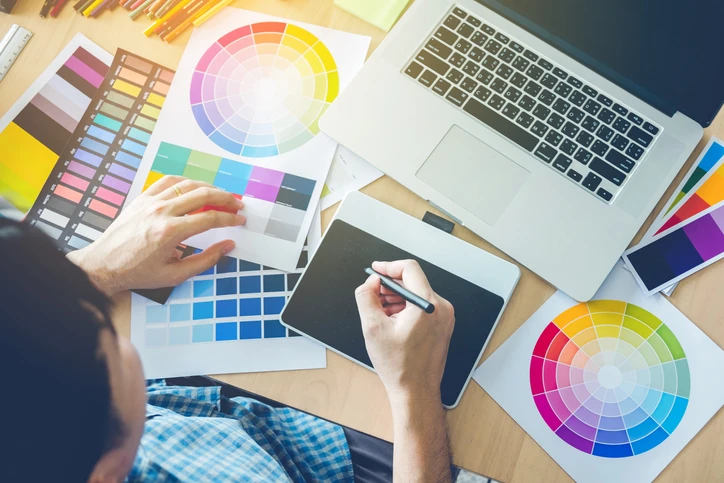Table of Contents
You don’t need a university degree to become a successful designer. What matters most is your ability to create strong visuals, use industry tools skillfully, and solve communication problems through design.
Fast-tracked graphic design training, hands-on practice, and a strong portfolio can help you grow your skills and find work in areas like marketing, advertising, print design, or freelance.
In this article, you will learn what graphic designers do, the skills needed to become a graphic designer in 2025, and the steps you’ll need to take to start your new tech career.
Listen to: Your 2025 Guide to Becoming a Graphic Designer Without a Degree
Do I Need a Degree to Become a Graphic Designer?
The simple answer: no, you don’t need a university degree to work as a graphic designer.
Employers and clients are looking for your design skills, your graphic design portfolio, and your ability to solve visual problems. That’s why many aspiring designers go for skills-based training.
Instead of spending years in a university program, a specialized Graphic Design diploma focuses on job-ready skills from the start. You learn how to use industry tools, apply design principles, and build a portfolio that reflects the kind of work employers want to see. The training takes less time, costs less than a degree, and prepares you to enter the workforce quickly.
Essential Graphic Designer Skills in 2025
Graphic designers need hands-on technical experience, a strong design sense, and the ability to adapt ideas into visuals that work across different platforms. To stand out, here’s what matters most:
- Experience with Industry Software
Tools from the Adobe Creative Suite, including Illustrator, Photoshop, InDesign, and After Effects are fundamental to creating illustrations, editing photos, designing layouts, and building motion graphics. Learning to use them well helps you take on any professional projects, including social media and websites, and succeed. - Strong Design Fundamentals
Typography, color theory, layout, and composition are the foundation of good design. Understanding how these elements work together will help you create purposeful designs that reflect what your client wants to communicate. - Motion and Interactive Design
Being able to create simple animations, interactive websites, or dynamic visuals for video content can set you apart in the job market. With brands using motion in social media, ads, and web design, these skills are essential for design roles. - Concept Development and Visual Research
Every project starts with an idea. Knowing how to research a client’s audience, explore different creative directions, and turn a concept into a visual solution is a must. - Project Planning and Communication
Good designers manage their projects well. Keeping your files organized, meeting deadlines, and explaining your design choices to clients or teams are important soft skills that show professionalism, support teamwork, and help projects progress as planned.
Building a mix of technical ability, creative thinking, and project management will help you grow as a designer and adapt to the changing needs of the industry.
What Does a Graphic Designer Do?
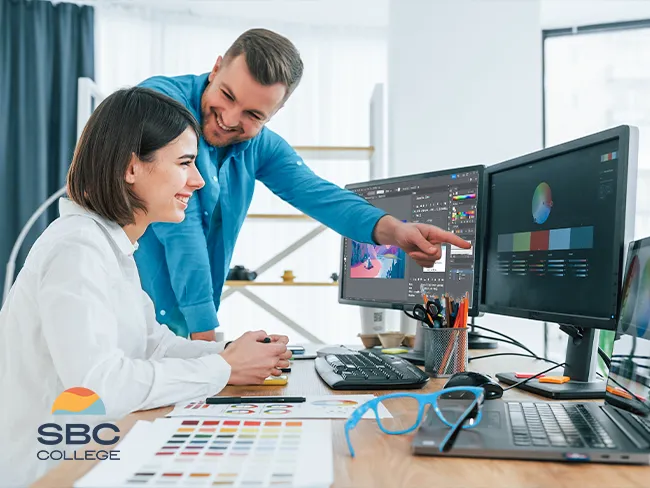
Graphic designers are visual communicators who bring ideas to life using images, typography, colour, and layout. Their work is found everywhere: logos, websites, mobile apps, magazines, packaging, advertising, and even animated content.
Typical responsibilities of a graphic design job include
- Developing creative concepts for brands, campaigns, and digital products
- Designing layouts for print, digital, and social media
- Building logos, brand assets, and style guides
- Collaborating with clients, marketing teams, and other creatives
- Using tools like Photoshop, Illustrator, and InDesign to produce high-quality work
- Revising and refining designs based on feedback
- Staying updated with design trends and best practices
Whether working at an agency, in-house at a company, or as a freelancer, graphic designers combine artistic talent with strategic thinking to solve visual challenges.
5 Steps to Your Graphic Design Career (No Degree Needed)
If you are wondering how to become a graphic designer, here are five practical steps to guide you:
Step 1: Learn the Fundamentals of Design
Before jumping into any software or client work, it’s important to understand what makes a design work.
“Good design is not about making something look pretty. It is about using layout, colour, and typography to guide the viewer’s eye and communicate clearly. Mastering these fundamentals is what turns creative ideas into effective designs.”
– Linda G., Graphic Design Specialist program instructor, SBC College
In the Graphic Design Specialist Diploma program, you begin with the basics: typography, colour, layout, proportion, and composition. You also practice turning ideas into visuals through techniques like sketching, word play, and building client-focused concepts. These skills give you a foundation to create work that is both purposeful and visually appealing.
Step 2: Develop Industry Software Skills
Once you know the design fundamentals, you can start to bring your ideas to life using industry-standard tools. Diploma training involves working directly with the Adobe tools that show up in everyday design work. You practice creating illustrations, designing layouts, editing images, producing motion graphics, and building web projects. Along the way, you learn how to organize content, manage layers, and prepare designs for various formats. These software skills help you work efficiently, follow professional design standards, and adapt to the needs of different clients.
Step 3: Build Your Graphic Design Portfolio with Personal Projects
As you build your skills, start working on projects that show your capability. Create logos, packaging mockups, websites, and social media visuals. You can design for fictional clients, local businesses, or community groups. Focus on showing not only your final designs, but also how you approach ideas and solve visual problems.
A portfolio that highlights both your creative process and finished work gives an employer a better picture of what you can bring to a project or team.
Step 4: Apply Your Skills Through a Practicum
Putting your skills into practice is an important part of growing as a designer. A practicum placement as part of your diploma program gives you the chance to contribute to design work for a business or organization. It also helps you gain experience managing deadlines, responding to client feedback, and collaborating with teams. This gives you a better sense of how design works in a professional setting and adds projects to build your portfolio.
Step 5: Stay Connected and Keep Growing
Graphic design is always evolving, which is why staying connected with the design community matters. Platforms like Behance or Dribbble let you share your work, explore new ideas, and see how other designers approach their projects. Engaging with these spaces helps you grow your skills over time and stay in tune with how the design field is evolving.
Each step above contributes to your development as a designer. You build your skills, gain experience with professional tools, apply your training in practical settings, and stay connected to what’s happening in the design world.
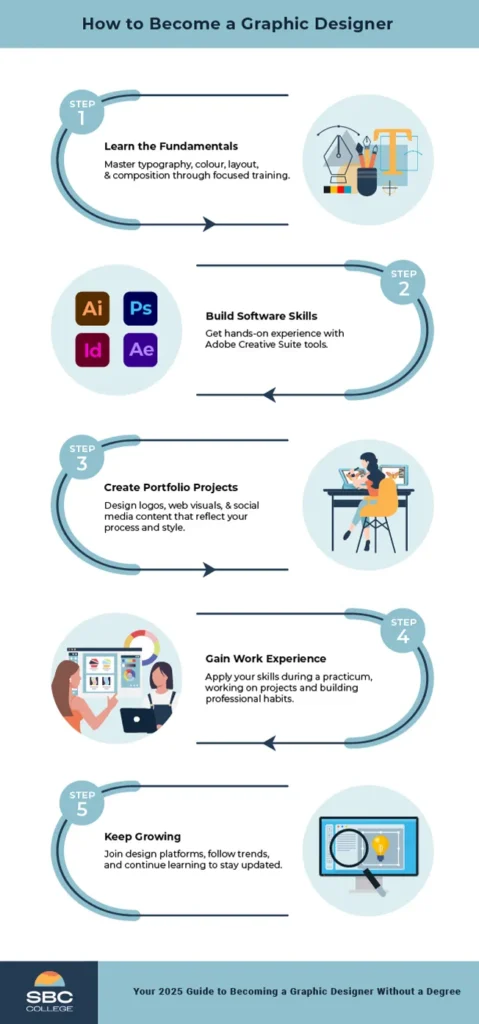
SBC College’s Graphic Design Specialist Program
If you’re looking for a career in graphic design, enrolling in SBC College’s Graphic Design Specialist diploma provides career-focused training in under a year. It equips you with the knowledge, design skills, and experience needed to start working in the field.
Throughout your program, you’ll build hands-on experience with essential design tools like Adobe Illustrator, Photoshop, InDesign, and After Effects. As you work through projects guided by instructors with experience working in the graphic design field, you also strengthen your skills in typography, colour theory, branding, layout, and web design.
Learning goes beyond the classroom. You’ll take part in a practicum placement, where you’ll contribute to active design projects and start approaching your work with the client’s goals in mind.
As Linda G., SBC College instructor, explains:
“Working on client projects during your practicum teaches you to design with purpose. You start thinking about what works for the audience, the brand, and the goals behind the project.”
As part of your diploma program, you’ll complete a practicum placement, where you will apply your skills on professional projects, work alongside creative teams, and build portfolio pieces that show your readiness for professional roles.
This blend of technical skills, project-based learning, and workplace exposure prepares you for what hiring managers expect. You will leave the program ready to collaborate, take on client projects, and produce design work that reflects both creativity and purpose.
Graphic Design Career Paths After an SBC Diploma
Completing your Graphic Design Specialist Diploma program can lead to a range of graphic design jobs. Some examples include:
Publication Designer
Apply your training in Adobe Illustrator and InDesign to design layouts for books, brochures, magazines, product packaging, and other print design projects.
Marketing Designer
Use your skills in Photoshop and After Effects to create promotional graphics, digital ads, and short motion projects for online campaigns. These visuals help brands connect with audiences across social media and digital platforms.
Brand Designer
Develop brand identities by creating logos, packaging designs, and marketing materials through projects completed in Illustrator.
UX/UI Designer
Apply your knowledge of web structure and design principles to build responsive layouts, website visuals, and digital banners. These projects support businesses looking to strengthen their online presence.
Illustrator
Use your understanding of design principles and typography to create impactful covers for books and albums. These designs combine imagery and text to capture attention and communicate meaning at a glance.
Graphic Design Freelancer
Build a professional portfolio showcasing projects completed in Illustrator, Photoshop, and InDesign. Freelance opportunities allow you to offer design services across print, branding, and digital projects for a variety of clients.
Your diploma leads to design opportunities in digital, print, and branding, allowing you to focus on career paths that fit your interests and professional goals.
Graphic design is a career where your ability to create visuals that work across platforms and support project goals counts more than a university degree. With career-focused training in industry tools, hands-on experience, and a portfolio that demonstrates your capability, you can build a successful future in this field.
To take the first step toward your graphic design training, contact an admissions advisor today.
Graphic Design Career FAQs
Is graphic design a good career choice?
Yes, graphic design is a good career choice if you’re interested in visual communication and solving design problems for brands. It is a growing field in Canada with opportunities in marketing, publishing, and digital media. Companies across industries need designers who can help them communicate visually and build strong brands.
How much do graphic designers make in Canada?
Graphic designer salaries in Canada depend on your experience, location, and specialty. While the average pay is around $30 per hour, new designers may start closer to $20 per hour and experienced designers can earn as much as $52 per hour.
How long does it take to become a graphic designer?
You can train to become a graphic designer in as little as 10 months through a diploma program. At SBC College, the Graphic Design Specialist diploma includes 1,040 hours of hands-on learning, combining coursework, design projects, and practicum experience in under a year. This helps you build the skills needed to take on professional design work.
Does SBC College offer flexible learning options for this program?
Yes. SBC College offers the Graphic Design Specialist diploma through on-campus and hybrid learning formats. This gives you the flexibility to choose the option that fits your schedule while still gaining full access to hands-on projects, instructor support, and practicum placement.
What kind of practicum opportunities are available with SBC’s program?
Your diploma includes a practicum placement where you will apply your skills to real design projects. Practicum opportunities can involve working on branding materials, social media content, website visuals, marketing pieces, and client-focused campaigns, giving you valuable real-world experience before you graduate.
What Adobe software will I learn in the SBC program?
The Adobe software you’ll learn in SBC’s Graphic Design Specialist program includes Adobe Illustrator, Photoshop, InDesign, and After Effects. These industry-standard tools prepare you to create illustrations, edit images, design layouts, build motion graphics, and develop web-based visuals, making you ready for a wide range of creative projects.


